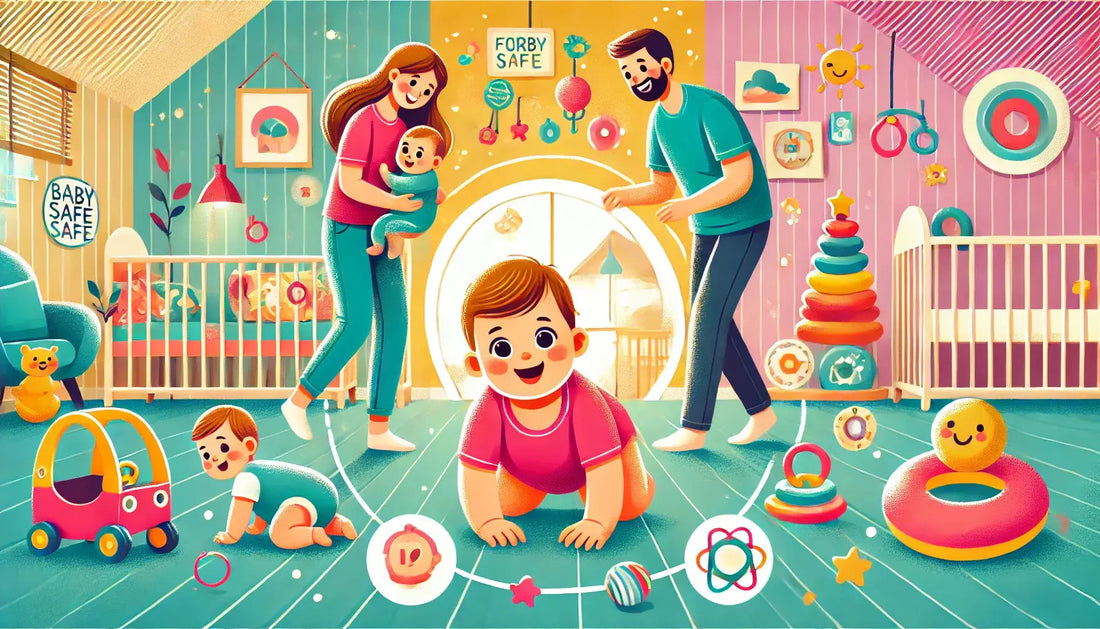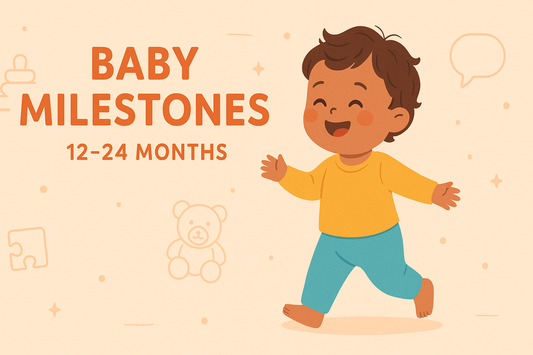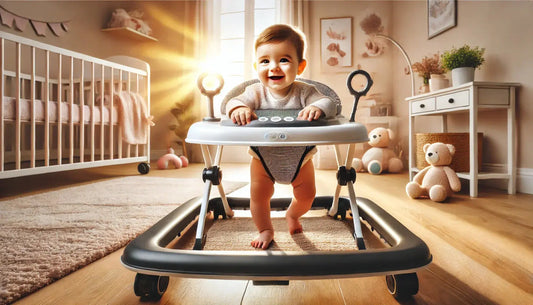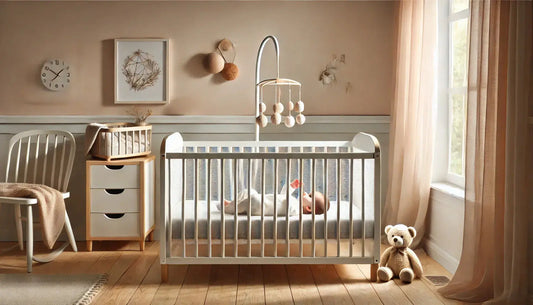
Baby's First Year: Month by Month Development
Share
Your baby will undergo an incredible transformation during their first year, developing from a newborn into an active toddler. Each month is filled with exciting milestones that signify growth and learning. Remember, every baby develops at their own pace—don’t worry if your child hasn’t reached a milestone as quickly as others. Celebrate progress and enjoy this magical journey!
1 to 3 Months: Early Movements and Awareness
- Smiling: Your baby will begin to smile socially, responding to your face and voice.
- Head Control: They will start lifting their head and chest during tummy time.
- Tracking Objects: Babies will begin to follow moving objects with their eyes and reduce eye-crossing.
- Hand Movements: They’ll open and close their hands, bring hands to their mouth, and attempt to grasp objects.
- Recommended Product: Anti-Roll Cushion to keep them comfortable and safe during tummy time.
4 to 6 Months: Exploring the World
- Rolling Over: Rolling from tummy to back is common, with back-to-tummy rolling soon after.
- Babbling: Babies experiment with sounds, mimicking tones and rhythm.
- Reaching and Grasping: They’ll reach for toys, grip them, and explore their textures.
- Sitting Up: With support, they may start sitting upright and demonstrate better head control.
- Introduction of Solids: Around six months is the recommended time to start trying solid foods.
- Recommended Product: Silicone Feeding Set for safe and easy mealtimes.
7 to 9 Months: Mobility and Interaction
- Crawling: Some babies begin crawling, scooting, or pulling themselves forward on their tummies.
- Sitting Without Support: They will sit confidently on their own.
- Responsive Interaction: Babies respond to their name, clap, and enjoy interactive games like peekaboo.
- Pulling to Stand: Many babies will pull up on furniture to stand.
- Recommended Product: Safety Corner Protectors to baby-proof your home.
10 to 12 Months: Transitioning to Toddlerhood
- First Steps: Some babies take their first steps around this age, while others cruise holding onto furniture.
- First Words: Words like "mama" and "dada" may emerge with intent, along with a few others.
- Pincer Grasp: They’ll pick up small objects using thumb and forefinger, enhancing their fine motor skills.
- Pretend Play: Babies mimic adult behaviours, such as pretending to talk on the phone or stirring a pot.
- Recommended Product: BabyBumpers head protector backpack to support those first steps safely.
When to Talk to a Medial Professional
If your baby isn’t progressing in key milestones or shows significant delays, consult your Doctor. Early intervention can address concerns effectively, but remember—each baby develops uniquely. Trust your instincts and seek guidance when needed.
Milestones Chart
Use the below baby milestones chart to see all the big moments they’ll have in one easy place.
| Age | Milestones |
|---|---|
| Newborn |
|
| 1 Month |
|
| 2 Months |
|
| 3 Months |
|
| 4 Months |
|
| 5 Months |
|
| 6 Months |
|
| 7 Months |
|
| 8 Months |
|
| 9 Months |
|
| 10 Months |
|
| 11 Months |
|
| 12 Months |
|
Celebrate Every Milestone
Each milestone is a unique achievement, reflecting your baby’s growth and learning. Focus on their progress rather than comparing timelines, and cherish the memories of this transformative first year.
Please note: Baby Bumpers and the information it contains are not intended to, and do not constitute, medical or other health advice or diagnosis and should not be used as such. You should always consult with a qualified physician or health professional about your specific circumstances.


